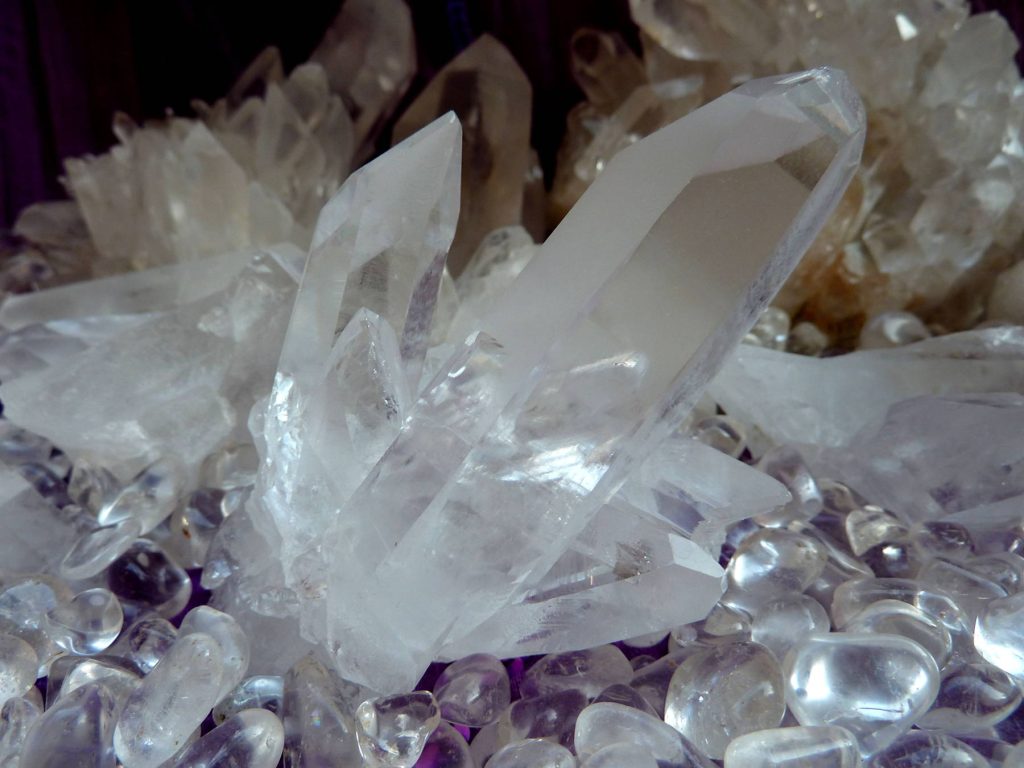7 Types And Uses Of Quartz Mines

Natural quartz deposits have various origins. At present, the common industrial types of quartz deposits available for development and utilization include natural crystal, quartz sandstone, quartzite, vein quartz, powder quartz, natural quartz sand and granite quartz.
1. Natural crystal
Natural crystal is a transparent large quartz crystal mineral, the main component is silicon dioxide. Crystals are mostly formed by natural growth in caves, rock cracks or joints, and faults. Their growth conditions are relatively harsh, and four conditions must be met at the same time: ample growth space, capable of providing silica-rich hydrothermal fluid, and a certain temperature. and stress, enough time to grow.
Natural crystal deposits have small reserves, poor mining conditions, scarce resources, and high prices, making it difficult to meet the needs of large-scale industrial production. However, due to the rich colors of natural crystal, crystal clear, beautiful and pure, it is mainly used for carving various handicrafts at present.
2. Quartz sandstone
Quartz sandstone is a sandy sedimentary rock consolidated by sedimentation. The content of quartz and siliceous clasts is generally >95%. The accessory minerals are mostly feldspar, mica and clay minerals, and the cement is generally siliceous.
Quartz sandstone deposits are generally large in scale, with stable geological occurrence and good mining conditions. At the same time, the ore hardness is generally relatively low, the natural particle size is moderate, and it is easy to be broken, classified and produced in large-scale industrial production. However, due to the complex composition of quartz sandstone cement, it is usually used in the production of daily glass sand, glass fiber, metal silicon, refractory materials, white carbon black, organic silicon and other fields.
3. Quartzite
Quartzite is usually a metamorphic rock formed by quartz sandstone or other siliceous rocks through regional metamorphism or thermal contact metamorphism. In addition to feldspar, mica and clay minerals, the associated minerals often contain trace amounts of tourmaline and hematite. and zircon etc. Compared with quartz sandstone, the ore of quartzite is more dense and hard.
4. Pulse Quartz
It is mainly formed under the action of magmatic hydrothermal fluid, usually in the form of a dense block structure. Its mineral composition is single, almost all of which are quartz, and the SiO2 content is generally above 99%. Vein quartz deposits are generally small in scale, steep in appearance, generally several meters to tens of meters in thickness, and generally ten to several hundred meters in length. A mining area can be composed of one vein or multiple veins.
The resource reserves of vein quartz deposits are generally relatively small, and the mining difficulty is relatively high. However, due to its low impurity content and stable resource quality, it is mostly used for the preparation of SiO2 99% to 99.9% silicon micropowder and low-iron quartz. Sand, optical glass, semiconductor and other high-quality quartz products.
5. Pink Quartz
Sedimentary weathered deposits are usually formed by weathering and disintegration of siliceous parent rocks under special geological structural conditions (temperature and humidity paleoclimate, gentle topography, paleogeography, hydraulic action, etc.). The quartz content is usually 95%~98%. can be as high as 99% or more.
6. Natural quartz sand
Natural quartz sand is a kind of sandy quartz mineral raw material with quartz as the main mineral component, which is formed by the long-term weathering of parent rocks such as granite, quartzite, quartz sandstone and vein quartz. Its associated minerals include feldspar, cuttings, Mica, clay minerals and heavy minerals such as zircon, tourmaline, ilmenite and amphibole are mainly marine sedimentary placer deposits and river-lake sedimentary placer deposits.
7. Granite
Refers to the quartz in large-grained granite or granite pegmatite (white granite) formed by the consolidation of magma. The quartz grade in this type of deposit is mostly about 25%, and the mineral impurities mainly come from the fluid inclusion-level lattice impurity elements in the quartz particles. This type of deposit is the main raw material for the production of high-purity quartz, which is currently mainly produced in Spruce Pine, North Carolina, USA.
